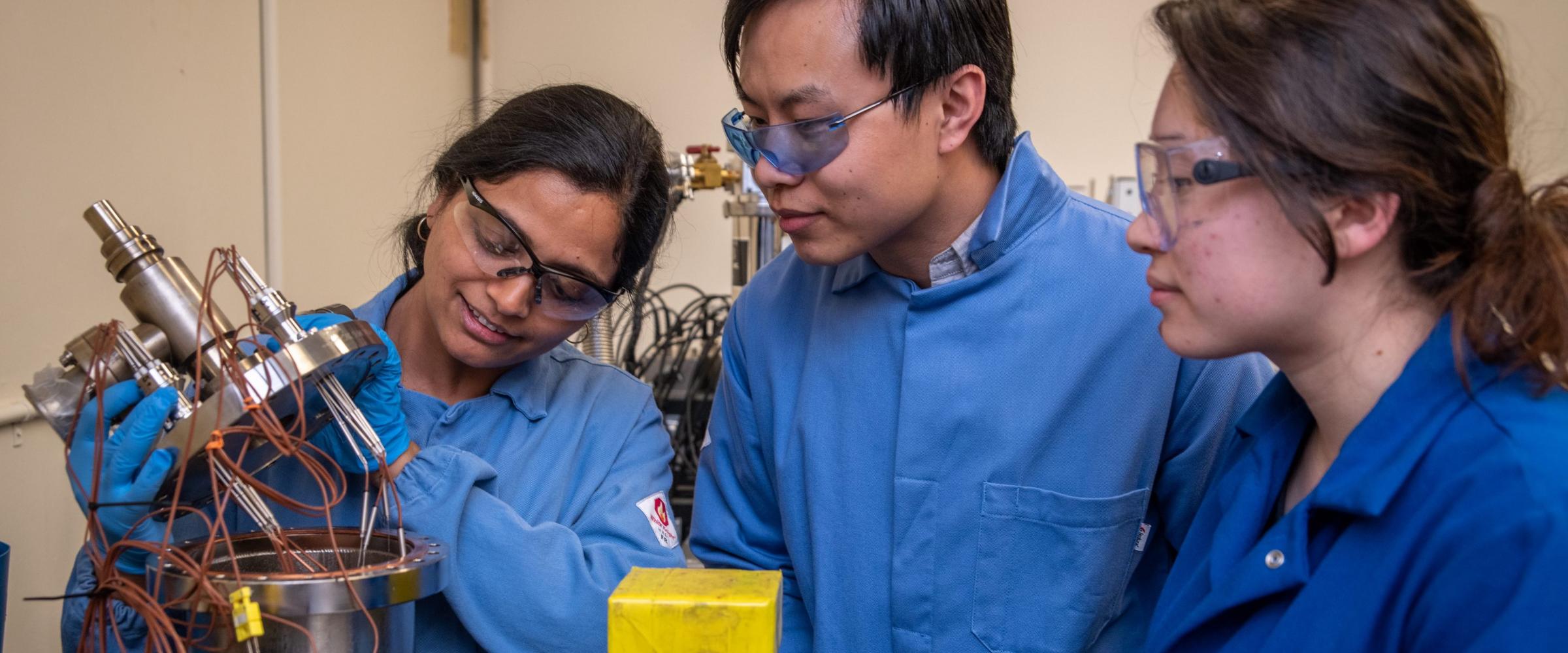Nonlinear Thermal Devices
Nonlinear Thermal Devices
Regulating heat transfer is a critical challenge for the thermal management of electronics, HVAC, and many modern technologies. However, compared to the extensive selection of highly nonlinear, switchable, and active components in the electrical domain, the thermal domain remains limited to a narrow selection of thermal transport-controlling components.
The ability to control the heat flow beyond traditional static and passive linear thermal resistors and capacitors is a key challenge for energy applications across multiple scales. This can be realized by novel nonlinear and switchable thermal components such as diodes, regulators, and switches in analogy to current-voltage curves in the electrical domain which are defined by their nonlinear transfer functions relating heat flow (Q) to the thermal bias (ΔT). Such thermal components have shown promise for many technologies.

 The need to reduce energy cost on HVAC (heating, ventilation, and air conditioning) for buildings and to minimize load surge on the electricity grid requires dynamically controllable thermal properties in building envelopes. To meet this challenge, we aim to develop a disruptive new paradigm for the thermal management of buildings: dynamically tunable thermal switches integrated within the building envelope. These new thermal switches are expected to enable optimal thermal routing in both space and time. Combining with thermal energy storage (TES) materials, the thermal switches have the potential to realize time shifting thermal loads, thermal micro-grids, and intelligent thermal isolation among local zones within a building envelope. For example, it could achieve utilizing the nighttime cooling for daytime, or isolating hot and cold zones for separate control within a single building. A key technical challenge will be designing thermal switches with both high switching ratio and high resistance in the off state. In contrast to numerous thermal switch concepts based on phase change, we will investigate all solid-state and low-cost materials to fulfill the economy and safety requirements for building application. This project is funded by the
The need to reduce energy cost on HVAC (heating, ventilation, and air conditioning) for buildings and to minimize load surge on the electricity grid requires dynamically controllable thermal properties in building envelopes. To meet this challenge, we aim to develop a disruptive new paradigm for the thermal management of buildings: dynamically tunable thermal switches integrated within the building envelope. These new thermal switches are expected to enable optimal thermal routing in both space and time. Combining with thermal energy storage (TES) materials, the thermal switches have the potential to realize time shifting thermal loads, thermal micro-grids, and intelligent thermal isolation among local zones within a building envelope. For example, it could achieve utilizing the nighttime cooling for daytime, or isolating hot and cold zones for separate control within a single building. A key technical challenge will be designing thermal switches with both high switching ratio and high resistance in the off state. In contrast to numerous thermal switch concepts based on phase change, we will investigate all solid-state and low-cost materials to fulfill the economy and safety requirements for building application. This project is funded by the